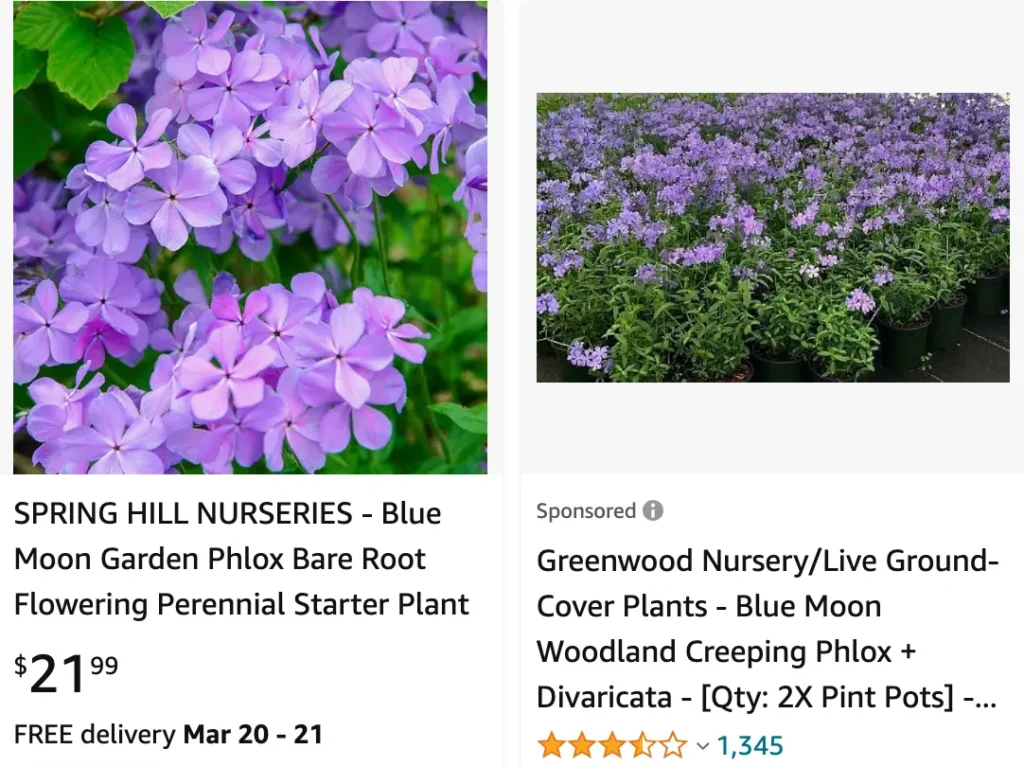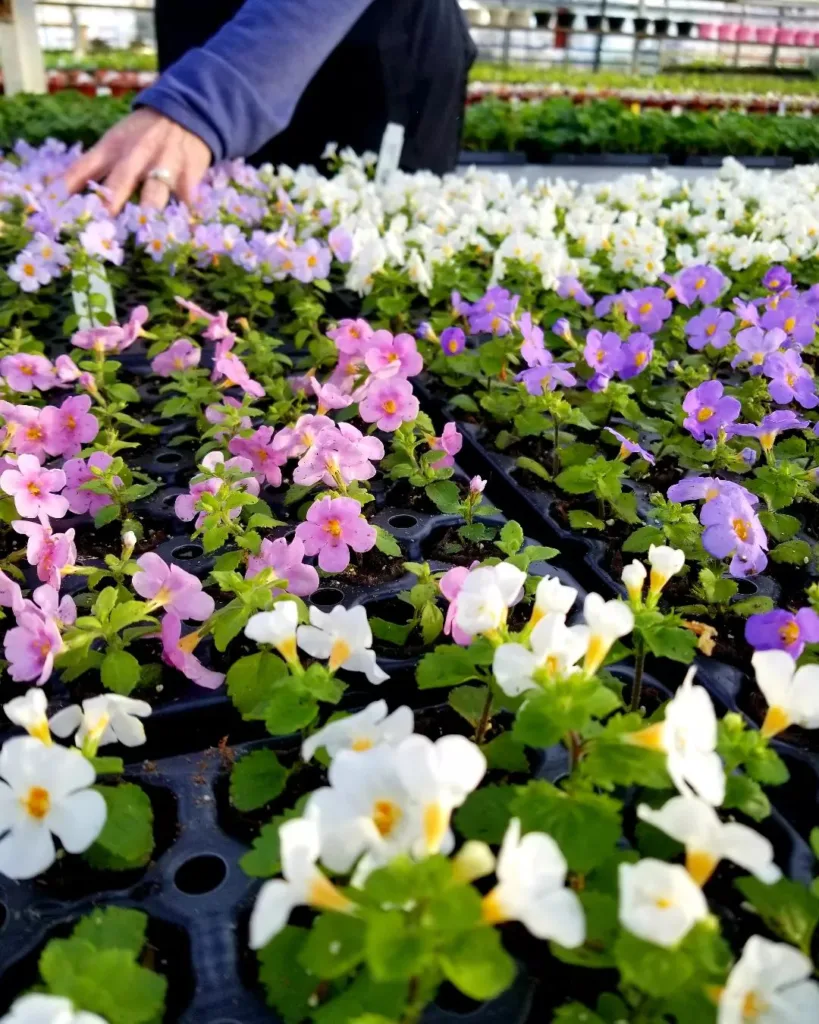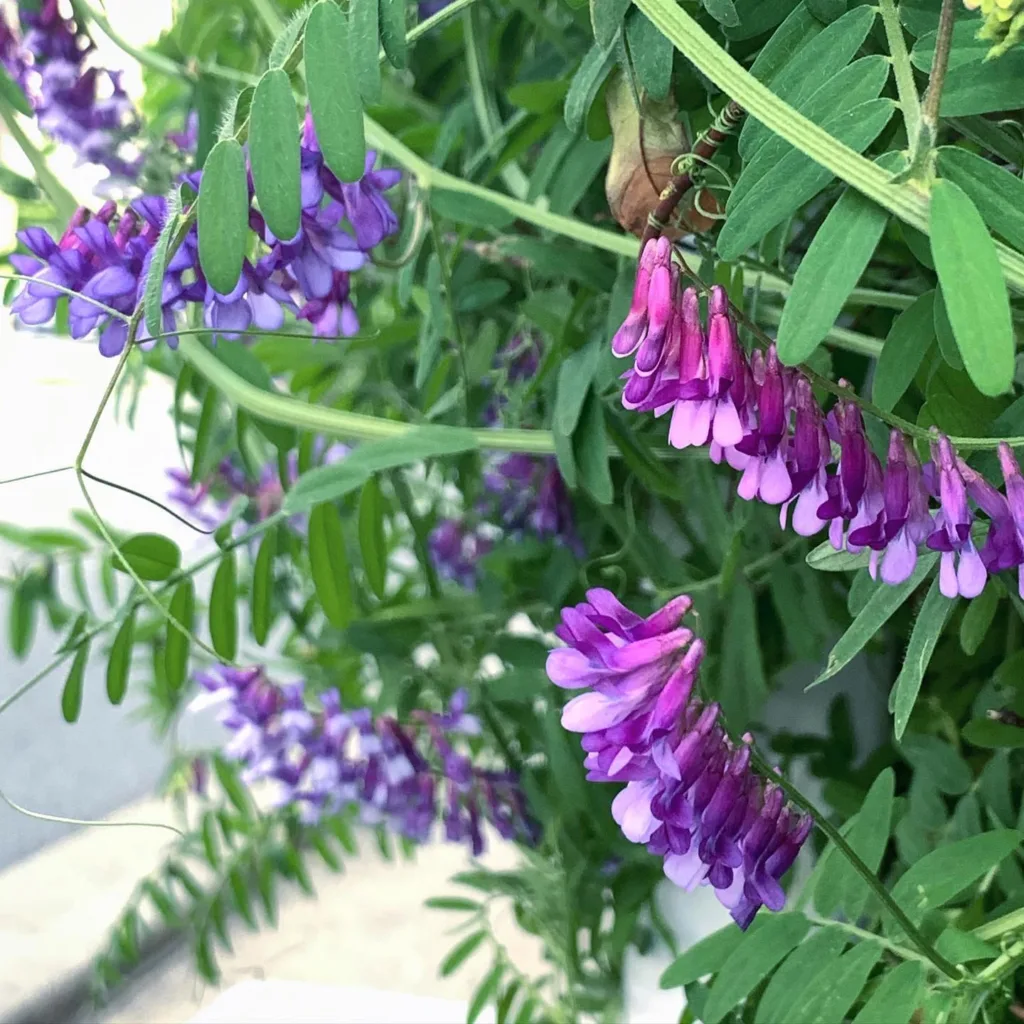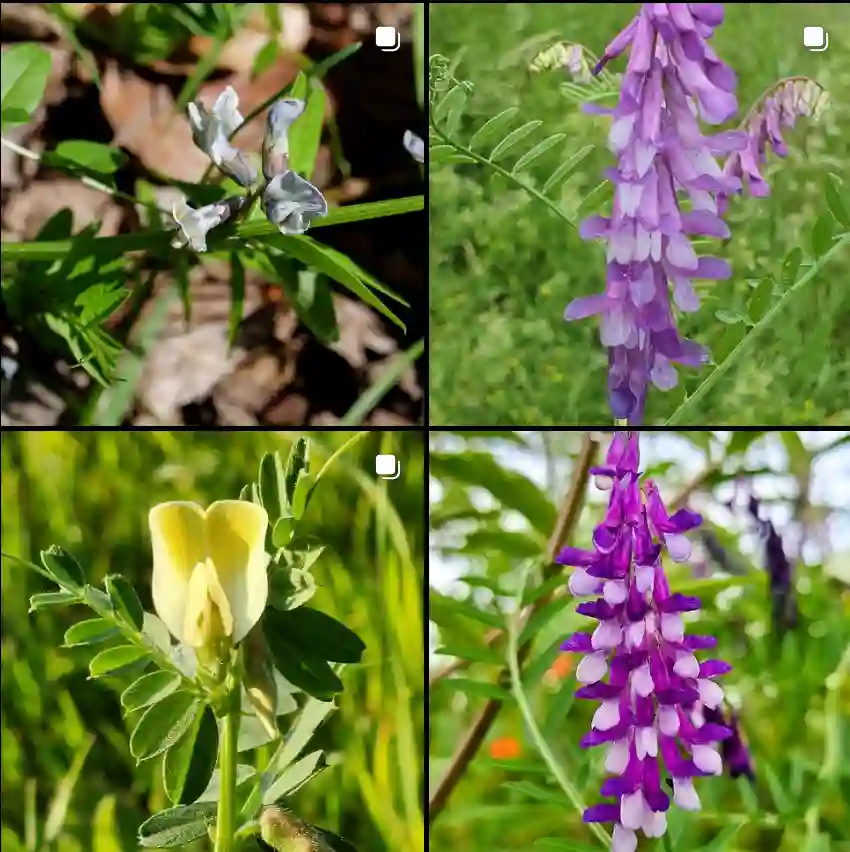
Does Blue Moon Phlox bloom all summer?
Blue Moon Phlox (Phlox paniculata ‘Blue Moon’) typically blooms from mid to late summer, offering a profusion of fragrant blue flowers. While the blooming period can extend for several weeks, it may not bloom continuously throughout the entire summer season.
70 Species in Genus Phlox
Where to plant Blue Moon Phlox?
Plant Blue Moon Phlox in a location with well-drained soil and full sun to partial shade. Ensure adequate air circulation to prevent powdery mildew, a common issue with phlox plants. This perennial thrives in garden beds, borders, or mixed perennial gardens.
Do deer eat Blue Moon Phlox?
Blue Moon Phlox is known for its deer-resistant qualities. While no plant is entirely deer-proof, phlox varieties, including Blue Moon, are often avoided by deer due to their strong fragrance and slightly bitter taste.
Does Blue Moon Phlox spread?
Blue Moon Phlox can spread gradually over time through rhizomes and self-seeding. Regular division every few years helps control its spread and rejuvenates older clumps, promoting healthier growth and abundant blooms.
How long does Blue Moon Phlox bloom?
Blue Moon Phlox typically blooms for several weeks during the summer, generally from mid to late summer. The exact duration of the blooming period may vary depending on factors such as climate, growing conditions, and the health of the plant.
How to care for Blue Moon Phlox?
Here’s a guide on caring for your Blue Moon Phlox and keep its beautiful blue blooms thriving:
Light:
- Blue Moon Phlox prefers full to partial shade. This balance allows it to flower well while preventing scorching of the leaves in hot climates.
- Full sun: Can be tolerated in cooler climates, but afternoon shade might be beneficial in very hot areas.
- Partial shade: Ideal for most situations, especially in hotter climates.
Soil:
- Blue Moon Phlox thrives in moist, well-drained soil with good organic matter content. Here’s how to achieve this:
- Soil Drainage: Ensure your soil drains well. If your soil is heavy clay, amending it with compost, peat moss, or other organic matter can improve drainage. You can also plant your Blue Moon Phlox in raised beds.
- Moisture: The soil should be consistently moist but not soggy.
- Organic Matter: Adding compost or aged manure when planting or as a topdressing in spring can improve soil quality and moisture retention.
Watering:
- Water regularly, especially during the first growing season and during hot, dry spells. Here’s a simple way to check moisture: Stick your finger into the top inch of soil. If it feels dry to the touch, it’s time to water.
- Avoid overwatering, which can lead to root rot.
Fertilizing:
- You may not need to fertilize frequently, especially if your soil is rich in nutrients. However, a balanced fertilizer formulated for perennials applied in early spring can be beneficial. Follow the package instructions for dosage and application.
Pruning:
- Routine pruning is not necessary but can be beneficial for several reasons:
- Maintain size and shape: Prune lightly after flowering has finished to maintain a desired size and shape.
- Encourage bushier growth: Trimming back some stems after flowering can promote bushier growth.
- Deadheading: Removing spent flowers (deadheading) can encourage additional blooms throughout the season.
- Use sharp, sterilized pruning shears when pruning.
Additional Tips:
- Blue Moon Phlox is generally deer and rabbit resistant.
- Watch out for common garden pests like aphids or leafhoppers. Insecticidal soap or neem oil solution can be used for control if needed.
- Blue Moon Phlox multiplies gradually by rhizomes and spreading stems. You can divide the plant every 3-5 years in spring or early fall to propagate new plants.
- Enjoy the beautiful blue blooms of your Blue Moon Phlox in late spring and early summer!
How to deadhead Blue Moon Phlox?
Deadheading Blue Moon Phlox involves removing faded or spent flowers to encourage the plant to produce more blooms and prolong the flowering period. Snip off the flower stalks just above a set of healthy leaves or buds using clean, sharp pruning shears.
How to prune Blue Moon Phlox?
Pruning Blue Moon Phlox is generally minimal and primarily involves deadheading spent blooms. Additionally, you can trim back any leggy or damaged stems to maintain a compact and tidy appearance. Prune in late spring or early summer before the blooming period begins.
When does Blue Moon Phlox bloom?
Blue Moon Phlox typically begins blooming in mid to late summer, producing clusters of fragrant blue flowers that attract pollinators such as bees and butterflies. The exact timing of flowering may vary depending on factors such as climate, growing conditions, and the specific cultivar.
If i die, water my plants!



